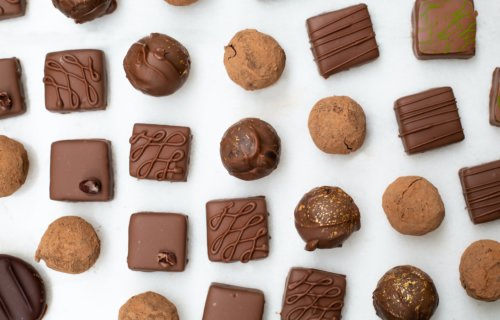NEW BRUNSWICK, N.J. — Many can’t help but feel uneasy about the ever-expanding role of technology in our daily lives, but new futuristic innovations from one food scientist at Rutgers are the type of technological breakthrough we can all support — low-fat chocolate! Qingrong Huang, a professor in the Department of Food Science at the Rutgers School of Environmental and Biological Sciences, is revealing a new low-fat chocolate created using a 3D printer. Even better, this new, healthier chocolate can come in “pretty much any” shape one desires.
Prof. Huang says this chocolate will be just the first of an entire line of “functional foods,” or edibles specially designed with health benefits in mind. Ultimately, the end goal is to make healthier chocolate more easily accessible to modern consumers. Huang and his team are already working on other versions of healthy chocolate; low-sugar and sugar-free options.
The research team successfully created and printed a mixture that produced low-fat chocolate by substituting fatty cocoa butter with a lower-fat, water-in-oil emulsion.
“Everybody likes to eat chocolate, but we are also concerned with our health,” Prof. Huang says in a university release. “To address this, we have created a chocolate that is not only low-fat, but that can also be printed with a 3D printer. It’s our first ‘functional’ chocolate.”

What makes this treat different from regular chocolate?
Scientists create emulsions by breaking down two immiscible liquids into minute droplets. During this sequence, the two liquids usually separate quickly – for example, with oil and vinegar – unless a third, stabilizing ingredient (an emulsifier) holds them together. For instance, an egg is the emulsifier in a vinaigrette.
Traditional chocolate candy is usually made using cocoa butter, cocoa powder, and powdered sugar in combination with any one of numerous different emulsifiers.
For this project, the research team experimented with different ingredient ratios for a standard chocolate recipe in an attempt to find the best balance between liquid and solid for 3D printing. In pursuit of a lower fat level in the mixture, researchers created a water-in-cocoa butter emulsion held together by gum arabic, an extract of the acacia tree commonly used in the food industry, to replace the cocoa butter. They then mixed the emulsion with golden syrup to enhance the flavor and added it to the other ingredients.
Besides just being delicious, Prof. Huang explains that chocolate is a material with a lot to offer food scientists. Using an array of advanced techniques facilitating the examination of the molecular structure and physical properties of chocolate, researchers were able to analyze the printed chocolate’s physical characteristics. More specifically, they searched for the proper level of viscosity for printing and looked for the optimal texture and smoothness “for a good mouthfeel,” according to Prof. Huang. After experimenting with numerous different water-oil ratios and varying the percentages of all main ingredients, researchers settled on one final mixture.
Making chocolate — using an app?
The process of 3D printing is all about creating a physical object from a digital model by laying down layers of material in quick succession. The 3D printer, and the shapes it produces, are all programmable using an app on a cellphone.
In summation, Prof. Huang adds that he plans on designing far more functional foods containing healthy added ingredients – substances like orange peel, tea, red pepper, onion, Rosemary, turmeric, blueberry, and ginger – that consumers will perhaps print and eat in the future.
“3D food printing technology enables the development of customized edible products with tailored taste, shape and texture as well as optimal nutrition based on consumer needs,” Prof. Huang concludes.
The study is published in the journal Food Hydrocolloids.


I’m not much of a chocolateer but I’d be suspicious of this. Are they lacing it with mind control dope?